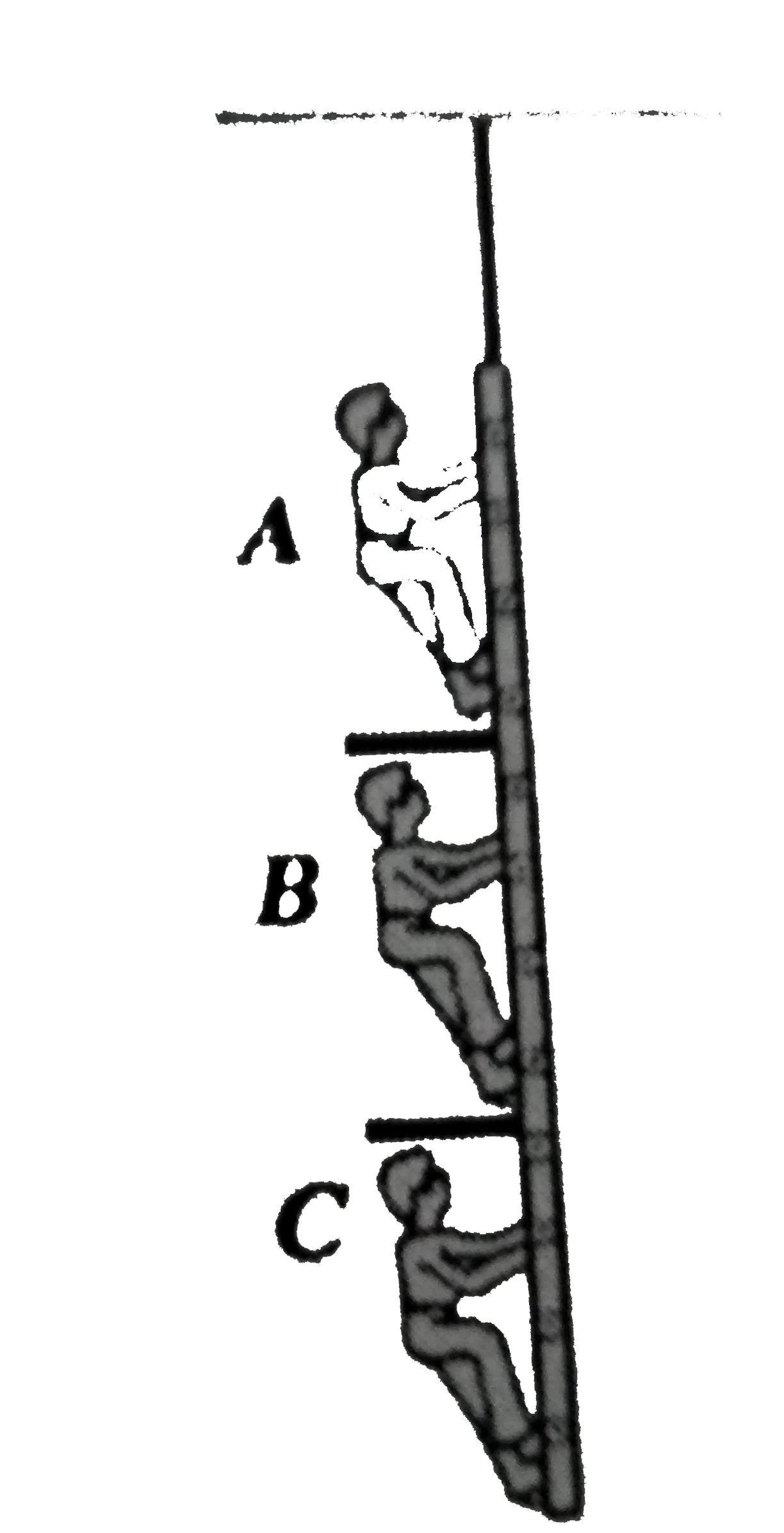Match the situations in column I to the accelerations of blocks in the column II (acceleration due to gravity is g and F is an additional force applied to one of the blocks ?
 Solution in Gujrati
Solution in Gujrati
The correct Answer is:A, B, C, D
Step by step video & image solution for Match the situations in column I to the accelerations of blocks in the column II (acceleration due to gravity is g and F is an additional force applied to one of the blocks ? by Physics experts to help you in doubts & scoring excellent marks in Class 12 exams.
Updated on:21/07/2023Topper's Solved these Questions
- NEWTON'S LAWS OF MOTION & FRICTIONBOOK - ALLEN CHAPTER - NEWTON'S LAWS OF MOTION & FRICTIONEXERCISE - EXERCISE (O-2)
31 Videos
- NEWTON'S LAWS OF MOTION & FRICTIONBOOK - ALLEN CHAPTER - NEWTON'S LAWS OF MOTION & FRICTIONEXERCISE - EXERCISE (JM)
6 Videos
- NEWTON'S LAWS OF MOTION & FRICTIONBOOK - ALLEN CHAPTER - NEWTON'S LAWS OF MOTION & FRICTIONEXERCISE - EXERCISE (S-2)
9 Videos
- MOTION IN A PALNEBOOK - ALLEN CHAPTER - MOTION IN A PALNEEXERCISE - SOLVED EXAMPLE
28 Videos
- NEWTONS LAWS OF MOTIONBOOK - ALLEN CHAPTER - NEWTONS LAWS OF MOTIONEXERCISE - EXERCISE-III
28 Videos
Similar Questions
Two monkey of masses 10 kg and 8 kg are moving along a verticle rope as shown in fig. the former climbing up with an acceleration of 2ms−2, while the later coming down with a uniform velocity of 2ms−1. Find the tension in the rope at the fixed support.

View SolutionTwo fixed frictionless inclined planes making an angle 30∘ and 60∘ with the vertical are shown in figure. Two blocks A and B are planes. What is the relative vertical acceleration of A with respect to B?

View SolutionA ladder is hanging from ceiling as shownin figure. Three men A, B and C of masses 40 kg, 60 kg, and 50 kg are climbing the ladder. Man A is going up with retardation 2m/s2, C is going up with an acceleration of 1m/s2 and man B is going up with a constantg speed of 0.5 m/s. Find the tension in the string supporting the ledder. [g=9.8m/s2]

View SolutionA particle thrown over a triangle from one end of a horizontal base falls on the other end of the base after grazing the vertex. If αandβ are the base angles of triangle and angle of projection is θ, then prove that (tanθ=tanα+tanβ)
View SolutionAssertion: The driver in a vechicle moving with a constant speed on a straight road is in a non-inertial frame of referance.
Reason: A reference frame in which Newton's laws of motion are applicable is non-inertial.
View SolutionA block rests on a horizontal surface. A horizontal force F is applied to the block. The acceleration (a) produced in the block as a function of applied force (F) has been plotted in a graph (see figure). Find the mass of the block.
View SolutionA block of mass m is placed on a smooth wedge of inclination θ. The whole system is accelerated horizontally, so that the block does not slip on the wedge. The force exerted by the wedge on the block (g is acceleration due to gravity) will be
View SolutionSee the diagrams carefully in Column-1 and match each with the obeying relation (S) in column-2. The string is massless, inextensible and pulley is frictionless in each case. a=g/3, m= mass of block T = tension in a given string, apulley= acceleration of movable pulley in each case, acceleration due to gravity is g.

View SolutionIn the diagram shown in figure. Match the following columns.

Colmun IColumn II(A) Absolute acceleration of 1 kg block(p)11ms−2(B) Absolute acceleration of 2 kg block(q)6ms−2(C) Relative acceleration between the two(r)17ms−2(s)None
View SolutionA cubical block of side 'a' is held at rest, against a rough vertical wall by applying a force F acting along the centre. The mass of the block is m. Taking acceleration due to gravity as 'g' , determine
(i) The minimum coefficient of friction between the block and wall
(ii) The torque by normal reaction about the centre of mass
View SolutionThe maximum value of the applied force F such that the block as shown in the arrangement does not move is (Acceleration due to gravity, g=10 ms^-2 )
View SolutionMatch Column-I with Column-II :
Column-IColumn-II(1) Positive acceleration(a) Speed of particle decreases(2) Negative acceleration(b) Speed of particle increases(c) Speed of particle keep on changing
View SolutionA cubic block having square cross-section of side 2m and of mass M = 10kg is resting over a platform moving at constant acceleration a=m/s2. Coefficient of friction between the block and the platform is μ=0.1. A force F acts at the top of the cube as shown in Fig. Now match Column-I with Column-II

Column-IColumn-II(A)F=0(P)Block neither topples nor slips over the platform(B)F=45N(Q)Block topples but does not slip over the plateform(C)F=15N(R) Block slips but does not topple over the platform(D)F=25N(S) Block slips as well as topples on the platform
View SolutionA horizontal force F is applied on various bodies as shown in Column-I Friction is sufficient to prevent slipping in each case. If f represents frictional force between the body and the object and a represents acceleration of the body. Then match the following columns :

View SolutionA block of mass m slides along a floor while a force of magnitude F is applied to it at an angle theta as shown in figure. The coefficient of kinetic friction is mur . Then, the block's acceleration 'a' is given by: (g is acceleration due to gravity)
View SolutionIn the diagram shown in figure. Match the following columns.

Colmun IColumn II(A) Absolute acceleration of 1 kg block(p)11ms−2(B) Absolute acceleration of 2 kg block(q)6ms−2(C) Relative acceleration between the two(r)17ms−2(s)None
View Solution
